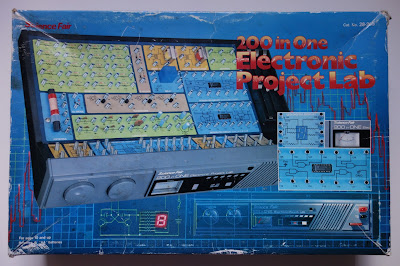During a recent exploration of the loft I came across two of
my electronics kits I was brought by my parents during my teens.
Salter Science Introduction to Electronics
I was given this kit for Christmas or perhaps a Birthday during
the late 80’s. I remember spending many
hours playing with it and trying most of the 25 fascinating experiments, I liked the Radio and noise making projects
the best. The simple board consists of
one single transistor, a couple of capacitors, resistors, diode, tuning
capacitor and aerial coil complete with spring terminals to join the components
together.
Science Fair 200 in One Electronic Project lab (circa 1981, 1987)
Sometime later in the early 90’s I was given this kit for
Christmas or perhaps as a Birthday present. I spent many happy hours trying out some of
the 200 projects, mostly LED or light projects.
I made the DC Meter lot as I didn't have a Multimeter. The large board has a large selection of
resistors, capacitors, LED’s, semiconductors and other miscellaneous components. Again
spring terminals are used to connect the components together.
Vintage Science Fair Electronic Project Kits
I have recently acquired the following.
These kits have a good selection of resistors, capacitors and germanium transistors on the early kits only the later kits had a single silicon transistor. The later kits included a 7 Segment display and some sort of integrated circuit. - 65 in One Electronic Project Kit (circa 1972)
- 75 in One Electronic Project Kit (circa 1976)
- 150 in One Electronic Project Kit (circa 1976)
- 160 in One Electronic Project Kit (circa 1982)











